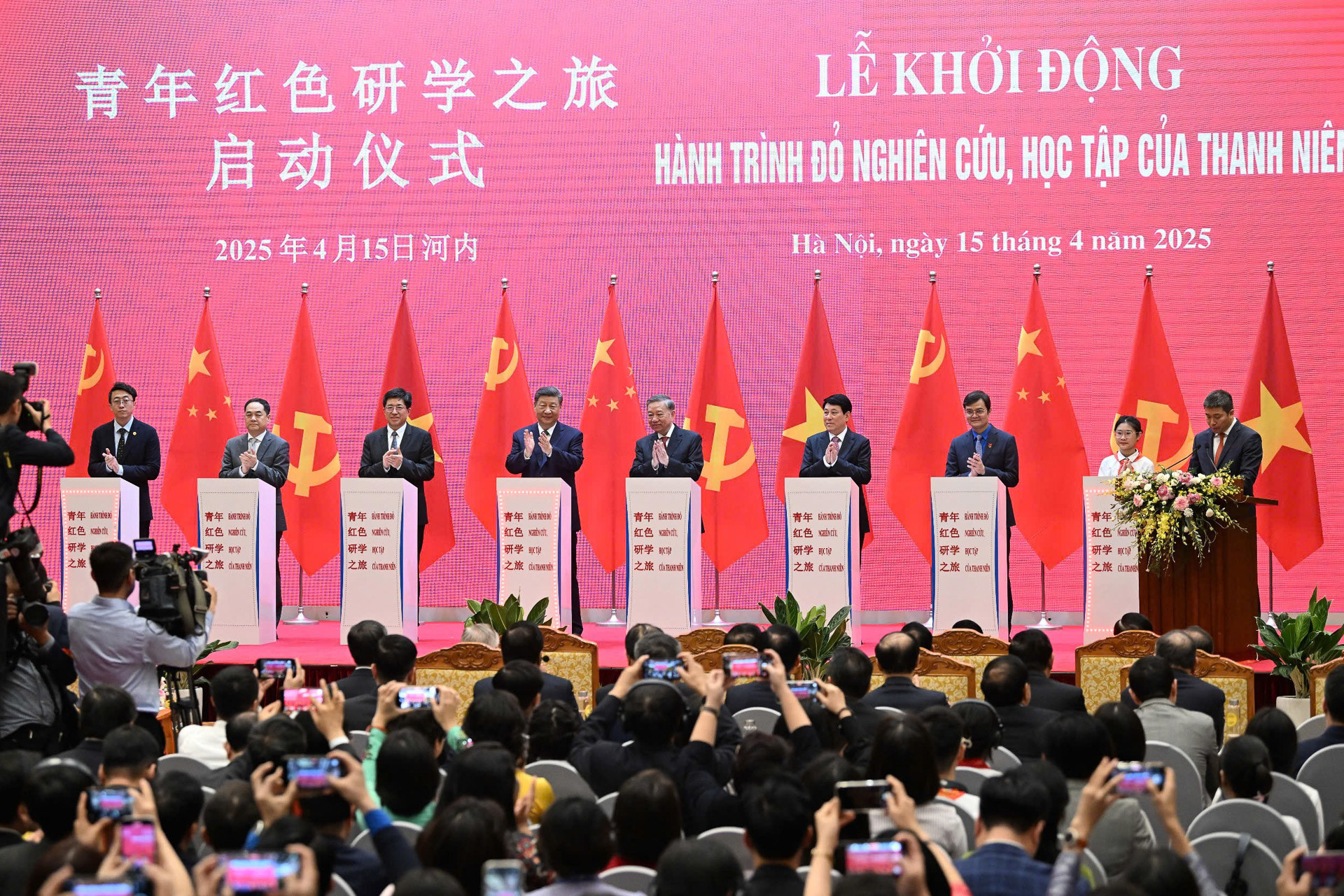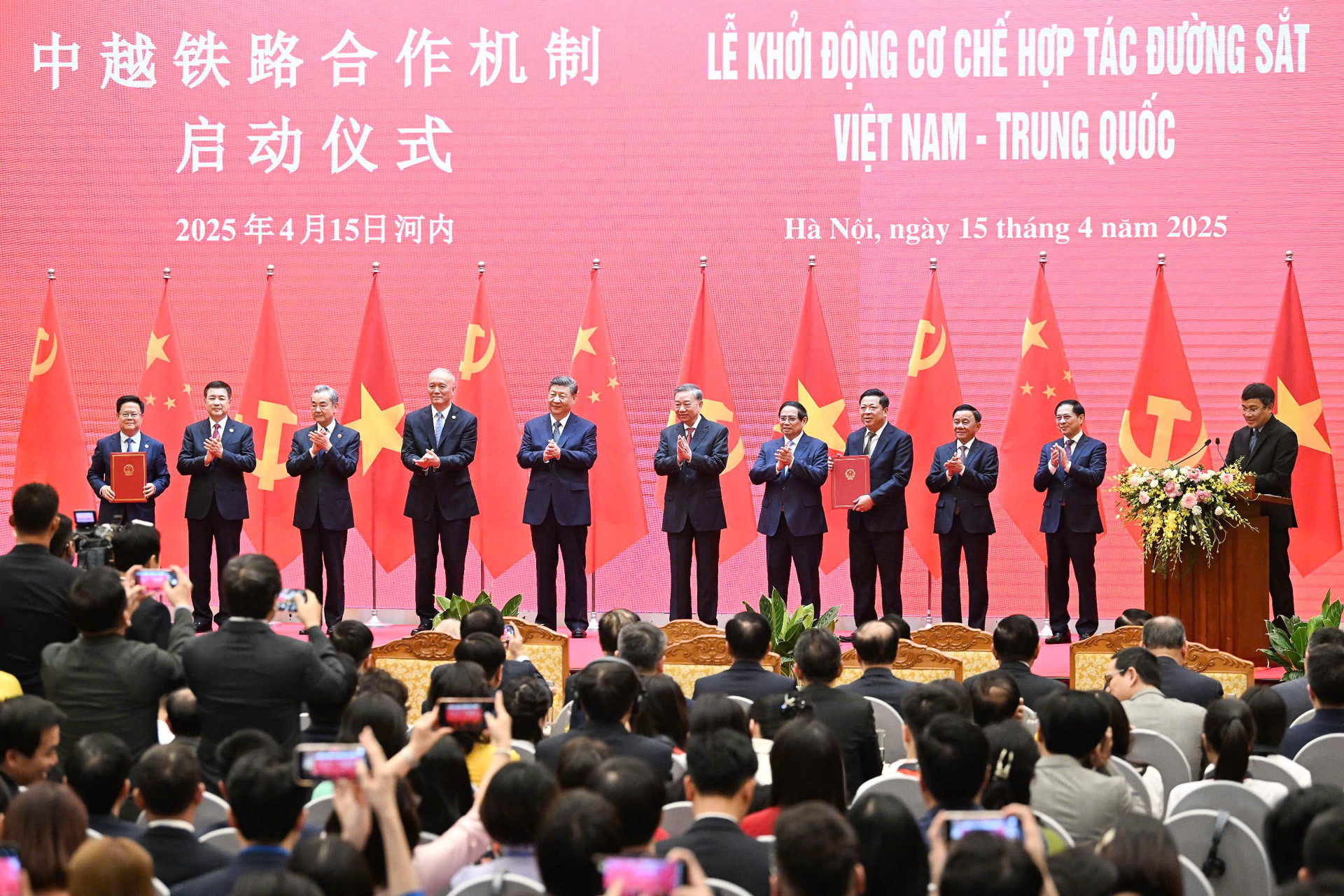Ambassador He Wei emphasized that this was President Xi's first overseas visit in 2025, underscoring a new stage of development in Vietnam-China relations. Within just one year, the top leaders of both Parties and States have conducted reciprocal visits.
A total of 45 cooperation agreements were signed between the two countries during the visit, marking a significant milestone. These agreements aim to deepen bilateral relations, advance the socialist cause in both nations, and contribute to regional and global peace and stability.
Substantive, strategic, and breakthrough outcomes

According to Ambassador He Wei, the Chinese leader’s high-level visit yielded several substantive and strategic results, many of which are considered breakthroughs.
First, Vietnam and China upgraded and institutionalized the "3+3" Strategic Dialogue Mechanism among their Ministries of Foreign Affairs, National Defense, and Public Security - raising it to the ministerial level.
The ambassador stressed that this is the world’s first ministerial-level “3+3” strategic dialogue mechanism, demonstrating the strong political and security cooperation between the two nations.
In infrastructure, particularly railway cooperation, an important project was officially launched. Ambassador He noted that rail cooperation will be expanded and upgraded to fully connect standard-gauge railways between the two countries. This will improve cross-border logistics, lower costs, and strengthen supply chains.
On cultural exchanges, Ambassador He underscored the importance of the "red gene" - the shared revolutionary heritage and communist ideals of both countries. Vietnamese revolutionary leader Ho Chi Minh’s legacy, for instance, remains deeply present throughout China.
He expressed hope that this foundation will guide both sides in strengthening youth engagement and friendship, as outlined by the two Parties and governments.
Post-visit, both nations are expected to implement the high-level consensus achieved, advancing comprehensive strategic cooperation to higher levels of quality, depth, and scope.
Ambassador He also called for closer strategic alignment, deeper infrastructure cooperation, enhanced supply chain stability, and new areas of collaboration including artificial intelligence (AI) and green development.
Marking 2025 as the “Year of China-Vietnam People-to-People Exchange,” he highlighted the promotion of "red culture" and "Red Journey" youth study programs to deepen understanding and emotional bonds between the two peoples.
Vietnam and China are also expected to strengthen cooperation within multilateral trade frameworks, particularly under the World Trade Organization (WTO), to contribute to a peaceful and prosperous future.
Broadening business cooperation between the two countries

Ambassador He shared that Vietnam has become a highly attractive destination for Chinese enterprises. A key reason for this, he said, is the stability of bilateral relations - especially since the establishment of the “China-Vietnam Community with a Shared Future” framework by top leaders of both nations.
“No one wants to invest in a country where bilateral relations are unstable,” the ambassador noted.
Vietnam and China enjoy geographical proximity and economic complementarity, along with close cultural ties. With China’s economy boasting a growing middle class now exceeding one billion people, Ambassador He said this presents huge development opportunities for neighboring countries like Vietnam.
Bilateral trade in 2024 surpassed USD 260 billion. Vietnamese agricultural products such as coffee and fresh coconuts are especially popular among Chinese consumers.
Notably, over 90% of Vietnam’s durian exports are destined for China, significantly improving incomes for Vietnamese farmers.
Ambassador He expressed hope that Vietnamese businesses will capitalize on the positive trajectory of Vietnam-China relations to expand into the Chinese market and improve their global competitiveness.
In recent years, cooperation has shifted from traditional sectors to high-tech fields such as AI, semiconductors, and nuclear energy - offering broader opportunities and greater benefits for businesses and people in both countries.
He identified environmental pollution and traffic congestion - issues of great concern to Vietnam’s leadership - as areas where both sides can collaborate further. He suggested Vietnam could adopt some of China’s experience in environmental management, citing Beijing as a model.
“The foundation of China-Vietnam relations lies with the people, its lifeblood is the people, and its strength also comes from the people,” He Wei affirmed.
In the first quarter of 2025, the number of Chinese tourists visiting Vietnam exceeded 1.58 million - a 78.3% increase year-on-year - making China Vietnam’s largest tourism source. Vietnamese travel to China is also surging.
Airlines from both countries are eager to launch more direct routes to meet this growing demand.
The Vinh - Tran Thuong